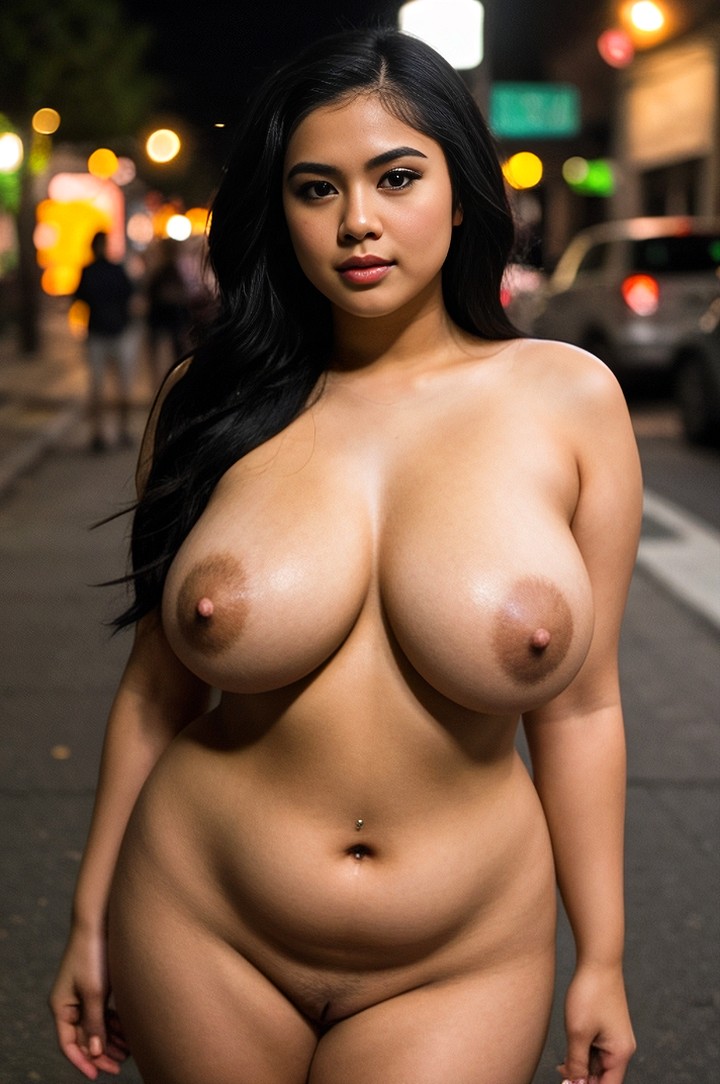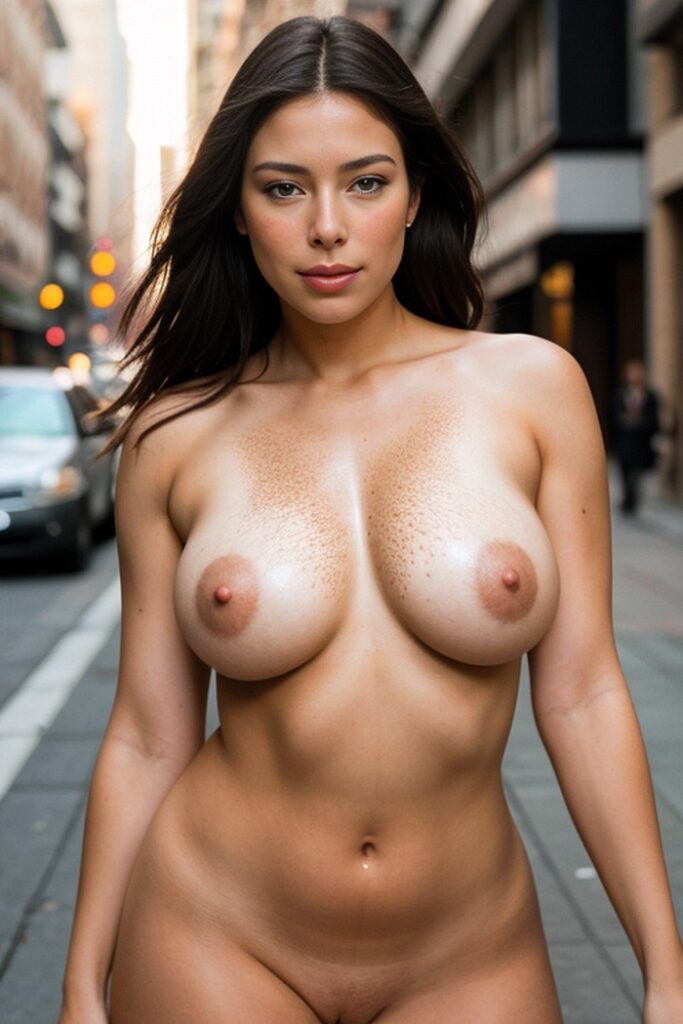Heavy fetish is a term used to describe a particular style and aesthetic that incorporates elements of bondage, leather, latex, and other fetish-inspired fashion. It has gained popularity within alternative subcultures, such as the goth, punk, and BDSM communities. This fashion style often embraces a dark and provocative look, characterized by the use of heavy materials, intricate designs, and provocative accessories. Its presence in fashion and alternative subcultures allows individuals to express their personal style, explore their sexuality, and challenge societal norms.
The Evolution of Heavy Fetish Fashion: From Underground to Mainstream
Hey there fashion enthusiasts! Today, we’re diving into the fascinating world of heavy fetish fashion and its journey from the underground to the mainstream. Strap in, because we’re about to take a wild ride through the evolution of this edgy and daring style.
Heavy fetish fashion has its roots in alternative subcultures, where individuals sought to express their rebellious spirit and challenge societal norms. It emerged as a form of self-expression that pushed boundaries and embraced the unconventional. Initially, heavy fetish fashion was confined to underground scenes, where it thrived as a symbol of nonconformity and individuality.
But as time went on, heavy fetish fashion began to seep into the mainstream. It started making appearances on runways, in music videos, and even in Hollywood films. Designers and artists began incorporating elements of heavy fetish fashion into their work, giving it a broader platform and exposing it to a wider audience.
One of the reasons heavy fetish fashion gained popularity was its ability to shock and provoke. Its bold and daring aesthetic challenged traditional notions of beauty and pushed the boundaries of what was considered acceptable in the fashion world. People were drawn to its rebellious nature and the sense of empowerment it provided.
As heavy fetish fashion started to gain traction, it also became more accessible. Designers began creating more wearable versions of heavy fetish garments, making them available to a wider range of consumers. This shift allowed individuals to incorporate elements of heavy fetish fashion into their everyday wardrobes, blurring the lines between subculture and mainstream fashion.
Celebrities played a significant role in the mainstreaming of heavy fetish fashion. Icons like Madonna, Lady Gaga, and Rihanna embraced the style, incorporating it into their stage performances and red carpet looks. Their influence helped to normalize heavy fetish fashion and make it more acceptable in mainstream culture.
The rise of social media also played a crucial role in the evolution of heavy fetish fashion. Platforms like Instagram allowed individuals to showcase their unique style and connect with like-minded individuals from around the world. This online community provided a space for heavy fetish fashion enthusiasts to share their love for the style and inspire others to embrace it.
Today, heavy fetish fashion continues to evolve and adapt. It has become a staple in alternative subcultures like goth, punk, and BDSM communities, while also making appearances in high fashion and streetwear. Designers continue to push the boundaries of what is considered acceptable, creating garments that challenge societal norms and celebrate individuality.
So, whether you’re a die-hard heavy fetish fashion enthusiast or simply curious about this edgy style, it’s clear that its journey from the underground to the mainstream has been a remarkable one. From its humble beginnings as a symbol of rebellion to its current status as a fashion statement embraced by many, heavy fetish fashion has left an indelible mark on the world of fashion and alternative subcultures.
So, next time you see someone rocking a heavy fetish-inspired outfit, remember the rich history and evolution behind it. And who knows, maybe you’ll be inspired to embrace your own rebellious spirit and incorporate a touch of heavy fetish fashion into your wardrobe. After all, fashion is all about self-expression and pushing boundaries.
Exploring the Intersection of Heavy Fetish and Alternative Subcultures
Hey there, fashion enthusiasts and alternative subculture aficionados! Today, we’re diving deep into the fascinating world of heavy fetish and its presence in both fashion and alternative subcultures. So, buckle up and get ready for a wild ride!
First things first, let’s talk about what heavy fetish actually means. Heavy fetish is a term used to describe a style that incorporates elements of BDSM (bondage, discipline, dominance, submission, sadism, and masochism) into fashion and personal expression. It’s all about pushing boundaries, embracing the unconventional, and celebrating individuality.
Now, you might be wondering how heavy fetish found its way into the fashion industry. Well, it all started in the underground scenes of the 1970s and 1980s, where alternative subcultures like punk, goth, and industrial were thriving. These subcultures were all about rebellion, nonconformity, and challenging societal norms. And what better way to do that than through fashion?
As these subcultures gained momentum, heavy fetish aesthetics began to emerge. Leather, latex, corsets, and bondage-inspired accessories became staples in the wardrobes of those who embraced this style. The fashion industry, always hungry for the next big thing, couldn’t ignore the allure of heavy fetish. Designers started incorporating these elements into their collections, bringing them into the mainstream.
Fast forward to today, and heavy fetish has become a prominent presence in fashion. From high-end designers to streetwear brands, you can find traces of heavy fetish in various collections. It’s no longer confined to the alternative subcultures that birthed it; it has transcended boundaries and become a part of the fashion zeitgeist.
But heavy fetish isn’t just about fashion; it’s also deeply intertwined with alternative subcultures. These subcultures provide a sense of community and belonging for those who embrace heavy fetish. They create spaces where people can express themselves freely, without fear of judgment or societal constraints.
Within these subcultures, heavy fetish is more than just a fashion statement; it’s a way of life. It’s about embracing one’s desires, exploring power dynamics, and finding liberation through self-expression. It’s a celebration of the unconventional, the taboo, and the erotic.
However, it’s important to note that heavy fetish is not for everyone. It’s a niche style that requires a certain level of confidence and self-assuredness to pull off. It’s about embracing your own desires and boundaries, and not conforming to societal expectations.
So, whether you’re a fashion enthusiast looking to experiment with your style or someone who identifies with alternative subcultures, heavy fetish offers a unique and exciting avenue for self-expression. It’s a way to challenge the status quo, embrace your desires, and celebrate your individuality.
In conclusion, heavy fetish has found its place in both fashion and alternative subcultures. It’s a style that pushes boundaries, challenges societal norms, and celebrates individuality. Whether you choose to incorporate heavy fetish elements into your wardrobe or fully immerse yourself in alternative subcultures, it’s all about embracing your desires and finding liberation through self-expression. So, go ahead, explore the intersection of heavy fetish and alternative subcultures, and let your true self shine!
Breaking Boundaries: How Heavy Fetish Fashion Challenges Societal Norms
Hey there fashion enthusiasts! Today, we’re diving into the fascinating world of heavy fetish fashion and its presence in alternative subcultures. Get ready to explore how this daring style challenges societal norms and breaks boundaries in the fashion industry.
When we think of fashion, we often envision glamorous runways and elegant designs. However, heavy fetish fashion takes a different approach, embracing a more daring and provocative aesthetic. This style draws inspiration from BDSM (bondage, discipline, dominance, submission, sadism, and masochism) culture, incorporating elements such as leather, latex, corsets, and metal hardware.
One of the most intriguing aspects of heavy fetish fashion is its ability to challenge societal norms. By pushing boundaries and embracing unconventional materials and designs, this style challenges the traditional notions of what is considered acceptable in mainstream fashion. It encourages individuals to express their unique identities and explore their sexuality through clothing.
Heavy fetish fashion has found a home in various alternative subcultures, such as goth, punk, and BDSM communities. These subcultures provide a safe space for individuals to express themselves without fear of judgment or discrimination. In these communities, heavy fetish fashion is celebrated as a form of self-expression and empowerment.
The presence of heavy fetish fashion in alternative subcultures has also influenced mainstream fashion. Designers and brands have started incorporating elements of this daring style into their collections, blurring the lines between alternative and mainstream fashion. This integration has allowed heavy fetish fashion to reach a wider audience and gain more acceptance in society.
One of the reasons heavy fetish fashion has gained popularity is its ability to challenge societal beauty standards. In a world where the media often promotes a narrow definition of beauty, heavy fetish fashion celebrates diversity and encourages individuals to embrace their unique bodies and identities. It promotes body positivity and empowers individuals to feel confident and comfortable in their own skin.
Moreover, heavy fetish fashion challenges gender norms by embracing androgyny and blurring the lines between masculine and feminine aesthetics. It encourages individuals to experiment with their gender expression and break free from the constraints of traditional gender roles. This inclusivity and acceptance of diverse gender identities have made heavy fetish fashion a powerful force in promoting gender equality.
Despite its provocative nature, heavy fetish fashion is not solely about shock value. It is a form of art that allows individuals to express their creativity and explore their deepest desires and fantasies. It encourages people to embrace their sexuality and celebrate their unique kinks and fetishes. By doing so, heavy fetish fashion promotes a healthy and open dialogue about sexuality, breaking down the stigma surrounding alternative sexual practices.
In conclusion, heavy fetish fashion challenges societal norms and pushes the boundaries of what is considered acceptable in mainstream fashion. It provides a platform for individuals to express their unique identities, explore their sexuality, and challenge traditional beauty and gender standards. By embracing heavy fetish fashion, we can break free from societal constraints and celebrate our individuality. So, go ahead and embrace your inner rebel, because fashion is all about breaking boundaries!
Heavy Fetish in Music and Performance Art: A Visual and Auditory Experience
Hey there, fashion enthusiasts and alternative subculture aficionados! Today, we’re diving into the intriguing world of heavy fetish and its presence in music and performance art. Get ready for a visual and auditory experience like no other!
When it comes to heavy fetish, it’s impossible to ignore its influence on music and performance art. This unique subculture has found a home in various genres, from industrial and gothic to punk and metal. It’s a fusion of fashion, music, and performance that creates a captivating and immersive experience for both the artists and the audience.
One of the most iconic figures in heavy fetish music is Marilyn Manson. With his provocative lyrics, dark aesthetics, and daring stage performances, Manson has become synonymous with the heavy fetish subculture. His music videos often feature elements of BDSM, latex, and other fetish-inspired fashion, creating a visual feast that complements his intense sound.
But it’s not just Manson who embraces heavy fetish in music. Bands like Rammstein, Nine Inch Nails, and KMFDM have also incorporated elements of this subculture into their music and performances. From elaborate stage setups to provocative costumes, these artists push boundaries and challenge societal norms, creating a truly immersive experience for their fans.
Performance art is another realm where heavy fetish finds its place. Artists like Marina Abramović and Ron Athey have used their bodies as a canvas to explore themes of pain, pleasure, and sexuality. Their performances often involve extreme body modifications, ritualistic acts, and fetish-inspired costumes, blurring the lines between art and taboo.
In these performances, heavy fetish becomes a tool for self-expression and a means to challenge societal norms. It’s a way for artists to explore their own desires, fears, and vulnerabilities, while also inviting the audience to question their own preconceived notions about sexuality and identity.
The heavy fetish aesthetic is not limited to the stage or performance art. It has also made its mark in the fashion industry. Designers like Alexander McQueen, Vivienne Westwood, and Jean Paul Gaultier have all incorporated elements of fetish fashion into their collections. From corsets and latex to bondage-inspired accessories, these designers embrace the provocative and daring nature of heavy fetish.
But heavy fetish fashion isn’t just reserved for the runway. It has also found a home in alternative subcultures like goth, punk, and BDSM communities. These subcultures often embrace the dark and edgy aesthetic of heavy fetish, using fashion as a form of self-expression and identity.
In these communities, heavy fetish fashion becomes a way to challenge societal norms and embrace individuality. It’s a visual language that allows individuals to explore their own desires and fantasies, creating a sense of empowerment and liberation.
So, whether it’s on the stage, in performance art, or in the fashion world, heavy fetish continues to captivate and inspire. It’s a subculture that pushes boundaries, challenges norms, and invites us to question our own perceptions of sexuality and identity. So, next time you find yourself immersed in the world of heavy fetish, embrace the visual and auditory experience, and let yourself be transported to a realm where the unconventional reigns supreme.
The Influence of Heavy Fetish on High Fashion Runways: A Closer Look
Hey there fashion enthusiasts! Today, we’re diving into the intriguing world of heavy fetish and its presence in both high fashion runways and alternative subcultures. It’s a topic that has been making waves in the fashion industry, pushing boundaries and challenging traditional norms. So, let’s take a closer look at the influence of heavy fetish on high fashion runways.
When we think of high fashion, we often envision glamorous gowns, sleek suits, and avant-garde designs. However, in recent years, designers have been incorporating elements of heavy fetish into their collections, adding a touch of edginess and rebellion to the runway.
One of the most notable examples of heavy fetish in high fashion is the use of leather. Leather has long been associated with alternative subcultures such as punk and BDSM, but it has now found its way onto the catwalks of top fashion houses. Designers have been experimenting with leather in various forms, from tailored jackets to full leather ensembles, creating a powerful and provocative aesthetic.
Another element that has been heavily influenced by fetish culture is latex. This shiny, form-fitting material has become a staple on high fashion runways, adding a sense of allure and sensuality to the designs. Latex dresses, skirts, and even accessories have been embraced by designers who are not afraid to push the boundaries of what is considered mainstream fashion.
Corsets, a classic symbol of fetish fashion, have also made a comeback in high fashion. These structured garments, often associated with waist-cinching and body modification, have been reimagined by designers who have incorporated them into their collections. Corsets are now seen as a symbol of empowerment and self-expression, rather than a tool for conforming to societal beauty standards.
The influence of heavy fetish on high fashion runways goes beyond clothing. Accessories such as harnesses, chokers, and collars have become popular additions to complete a look. These accessories, once associated with alternative subcultures, are now seen as fashion-forward and daring. They add an element of rebellion and individuality to an outfit, allowing the wearer to make a bold statement.
It’s important to note that the incorporation of heavy fetish into high fashion is not without controversy. Critics argue that it can be seen as appropriating and commodifying alternative subcultures, reducing them to mere trends. However, many designers argue that they are inspired by the aesthetics and symbolism of fetish culture, using it as a form of artistic expression rather than exploitation.
In conclusion, the influence of heavy fetish on high fashion runways is undeniable. Designers are embracing elements such as leather, latex, corsets, and accessories associated with alternative subcultures, pushing the boundaries of what is considered mainstream fashion. While it may be a controversial topic, it cannot be denied that heavy fetish has brought a sense of edginess, rebellion, and individuality to the world of high fashion. So, next time you see a model strutting down the runway in a leather ensemble or a latex dress, remember that fashion is all about self-expression and pushing boundaries.In conclusion, heavy fetish has a presence in fashion and alternative subcultures. It is characterized by the use of materials such as leather, latex, and metal, as well as provocative and boundary-pushing designs. This subculture often embraces themes of power, dominance, and sexuality, and can be seen in various fashion styles, including punk, goth, and BDSM-inspired fashion. While heavy fetish may not be mainstream, it continues to influence and inspire alternative fashion and subcultures.



